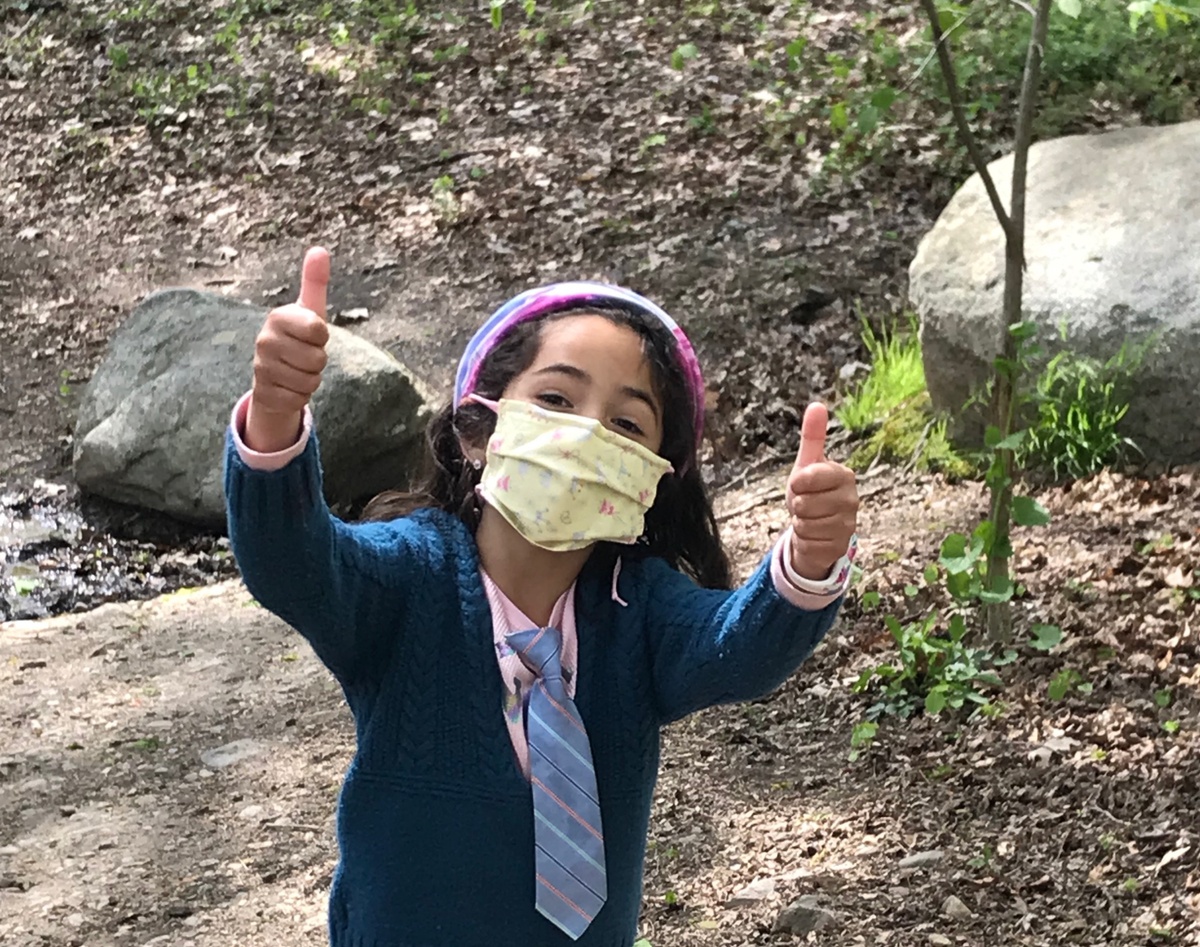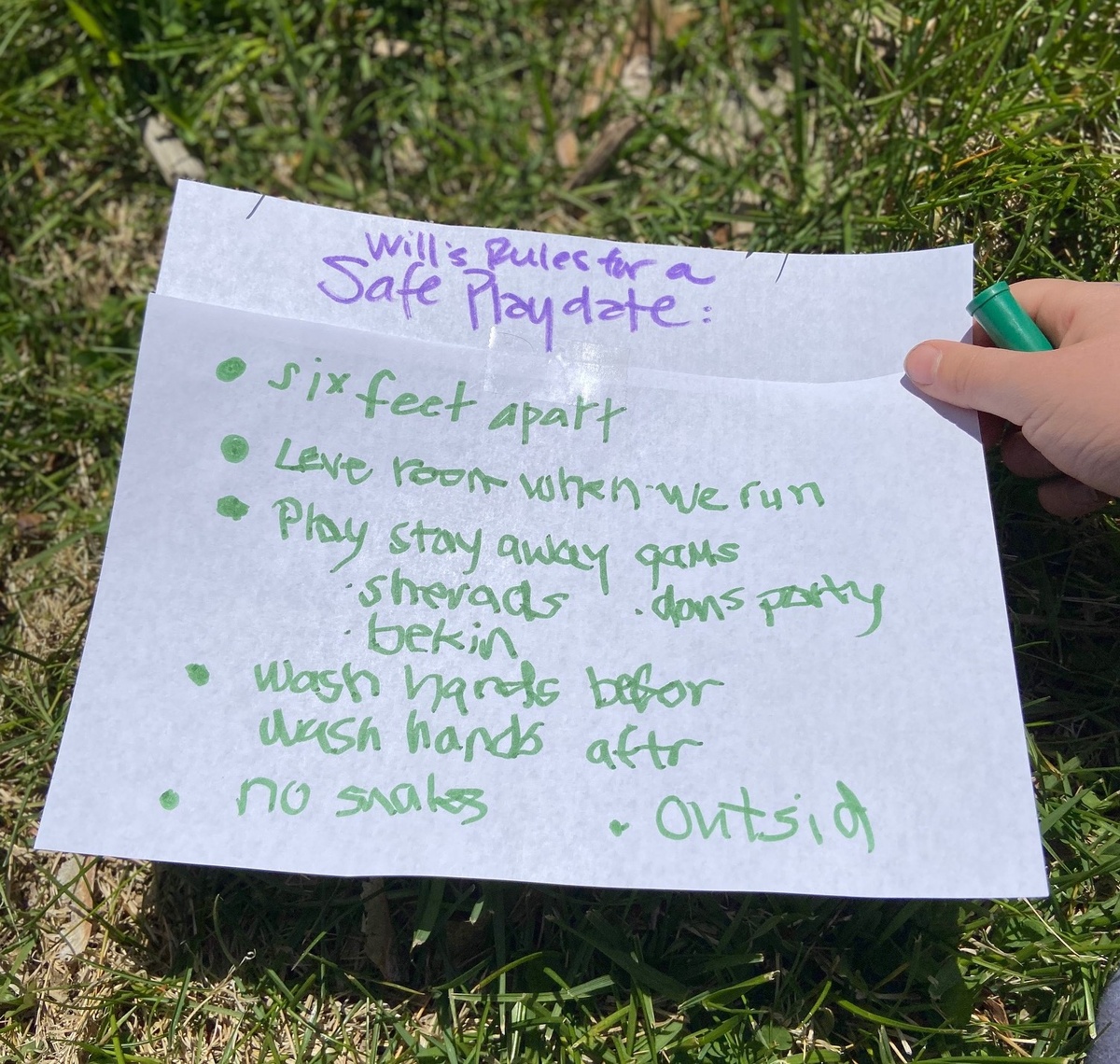In so many ways, re-opening is what kids have been waiting for. I’ve lost count of the times my kids ask, “When this is all over, can we…?” They miss friends, relatives, special places and activities, and we all look forward to an end to the uncertainty, isolation and fear. The kicker is, we’ll face a whole lot more uncertainty and some new fears as we transition back to “normal” life.
Though draconian at times, social distancing is clear, easy and designed to deliver on keeping us safe. It’s easy to keep kids from harm when you don’t leave your cocoon. And, it’s pretty easy to explain how staying away from all germs is safer. Many of us have even talked with kids about how we too are helpers when we stay home.
We’re heading back into a world that social distancing has made seem pretty scary. We also need to be prepared to fear for our kids. To support kids as we leave our safe cocoons, we’ll need to re-frame our messaging. And, there are steps we can take to get our kids—and ourselves—ready for reopening.
Ease kids in like goldfish
When I was 5, my parents got us pet fish. I couldn’t wait to see them swim, but rather than dump the fish right into the tank, my dad kept the fish in their small bag within the tank for several hours. He explained that this helped them get acclimated to the big tank. Just like with those fish, we can gradually release our kiddos back to the world by opening up their cocoon slowly and feeding them incremental chances to experience the world again. Here are few simple ways to do that:
- Practice social distance at home—Use a measuring tape or have the tallest adult in your house lie down on the floor. Mark their head and foot with tape—and voila! You’ve got an example of six feet that kids can really experience. Sit on either end of that tape opposite your child and learn to enjoy things you might do on a visit with family or friends. My family has sung songs, played charades and had rockin’ dance parties six feet apart—all to prepare ourselves for what it looks, feels and sounds like to play at a distance.
- Practice out and about—Without adding in other people, take the family to a new setting like a park, trail or even just a different corner of the neighborhood. Give kids the chance to check out what it feels like to play together while keeping “six feet apart.” See how your child does, and gently remind them when they get too close.
- Meet outdoors—When you do meet up with close family and friends, do it outside. The virus is less likely to transmit outdoors, so not only are we and our kids safer if we schedule get-togethers in fresh air, we will also be less worried, and our kids will have less of our worry to worry about. Plus, time outside brings all of the wonder and wellness that only nature can provide.
- Short playdates—Start with short visits with relatives and friends to practice your social distancing. It can be pretty confusing to see grandparents or good buddies and not be able to embrace or even get close to them, so keeping it to 15 to 20 minutes and building from there can help. If kids struggle, that is to be expected, and it’s super likely that they’ll just need more practice to get used to it. We can keep at it, and lengthen the visits as we and our kids become more comfortable with it all.
- Make a playdate checklist—Before your next playdate, work with kids to make a simple checklist of “ways to stay safe” and keep our friends safe during a playdate. Our list included: Stay six feet away; Leave lots of room when we run; Play fun “stay away” games like charades; Wash your hands before and after; Snack before or after.
Make friends with masks
Masks will play a key role in how we reopen life and they can give us a sense of security during this transition. And, although the CDC does not recommend masks for kids under 2, and some of us simply aren't comfortable with our kids wearing masks, there will be many situations in which masks are required or in which adding a mask helps keep kids safe. But, masks can be a real challenge for some kids at first. Kids can make friends with masks, especially if we take simple, intentional steps to introduce them the right way. Read a quick list of how to make masks comfortable, familiar—and even fun.
Try to unite the adults in your child’s life
Try to get on the same page with co-parents and any other caregivers in your kids’ lives. You may not all approach the risks and protective steps the same way—at least initially. But, it helps kids tremendously when the adults agree on a united approach and limit the number of times they wince at the brazen decisions or excessive caution of the other. And, let’s face it, this totally happens when we don’t agree on ground rules first.
Stay steady and answer questions as best you can
Kids cue off of us, and they’ll be watching us closely through all of this. Are we worried? Are we tense? We’re likely going to be both. We don’t need to manage this perfectly—that impossible pressure will only make it all the harder. But, we can steady the world for our kids with hugs, cuddles, favorite stories and all kinds of sweet moments that balance out that worry and ground our kids in love. Remember, it’s the climate, not the weather that counts.
We can also arm our kids with information and our reinforcement. When they reach out to us directly, we can aim to answer their questions as best we can. Even if that question is hard for us to answer. Even a, “That’s a good question, pumpkin,” in a calm voice paired with a warm touch works wonders. We can show them that we hear them and we are here for them, even when we don’t quite know what to say.

